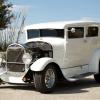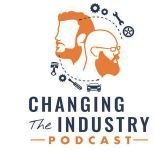acceptable brake line repair?
-
Available Subscriptions
-
Have you checked out Joe's Latest Blog?
-
By Joe Marconi in Joe's Blog0 commentsIt always amazes me when I hear about a technician who quits one repair shop to go work at another shop for less money. I know you have heard of this too, and you’ve probably asked yourself, “Can this be true? And Why?” The answer rests within the culture of the company. More specifically, the boss, manager, or a toxic work environment literally pushed the technician out the door.
While money and benefits tend to attract people to a company, it won’t keep them there. When a technician begins to look over the fence for greener grass, that is usually a sign that something is wrong within the workplace. It also means that his or her heart is probably already gone. If the issue is not resolved, no amount of money will keep that technician for the long term. The heart is always the first to leave. The last thing that leaves is the technician’s toolbox.
Shop owners: Focus more on employee retention than acquisition. This is not to say that you should not be constantly recruiting. You should. What it does means is that once you hire someone, your job isn’t over, that’s when it begins. Get to know your technicians. Build strong relationships. Have frequent one-on-ones. Engage in meaningful conversation. Find what truly motivates your technicians. You may be surprised that while money is a motivator, it’s usually not the prime motivator.
One last thing; the cost of technician turnover can be financially devastating. It also affects shop morale. Do all you can to create a workplace where technicians feel they are respected, recognized, and know that their work contributes to the overall success of the company. This will lead to improved morale and team spirit. Remember, when you see a technician’s toolbox rolling out of the bay on its way to another shop, the heart was most likely gone long before that.
-
-
Similar Topics
-
By carmcapriotto
Welcome to the Auto Repair Marketing Podcast with Brian Walker. In this solo episode, Brian discusses the importance of taking massive action during slow business periods.
Drawing from a recent conversation with a shop owner, he shares strategies to combat slow times, including leveraging networking groups like BNI, using your CRM effectively, creating engaging video content, and offering incentives.
Brian also highlights the importance of personal health and well-being, emphasizing that a healthy business owner is crucial for a thriving business.
Tune in for practical tips to help fill your bays and keep your business thriving.
Thank you to RepairPal for sponsoring The Auto Repair Marketing Podcast. Learn more about RepairPal at https://repairpal.com/shops
Lagniappe (Books, Links, Other Podcasts, etc)
Greg Buckley at Buckley's Auto Center : https://www.youtube.com/@BuckleysAutoCare/featured
Charlie's Foreign Car
https://www.youtube.com/@fixingcars
Royalty Auto Service
https://www.youtube.com/@theroyaltyautoservice
Dave’s Auto Center
https://www.youtube.com/@DavesAutoCenterCenterville
How To Get In Touch
Group - Auto Repair Marketing Mastermind
Website - shopmarketingpros.com
Facebook - facebook.com/shopmarketingpros
Get the Book - shopmarketingpros.com/book
Instagram - @shopmarketingpros
Questions/Ideas - [email protected]
Click to go to the Podcast on Remarkable Results Radio
-
By carmcapriotto
Thanks to our Partner, Shop Boss Tom Petty discusses the critical importance of technical training in the automotive industry. By addressing the skills gap, developing young talent, investing in continuous training, and embracing technological advancements, the industry can ensure a skilled and competent workforce ready to tackle the challenges of modern automotive technology. Tom Petty, Petty Motorworks, Waretown, NJ. Tom's previous episodes HERE Show Notes
The importance of technical training (00:00:06) Tom Petty emphasizes the need for shop owners to be engaged in creating a culture of technical training. The changing automotive industry (00:00:27) The automotive industry is rapidly evolving, and in-house training and mentorship are crucial for staying competitive. Cultivating young talent (00:02:18) Establishing apprentice programs and developing young individuals with the right skills and attitude for the automotive industry. Building a supportive network (00:05:12) The importance of collaboration and support among local automotive shops to develop and nurture young talent. Identifying and nurturing talent (00:07:21) Recognizing individuals with basic skill sets and natural aptitude and cultivating them into valuable technicians. Challenges in the industry (00:08:51) The industry's failure to focus on education and talent development leading to frustration and departure of potential talent. Thanks to our Partner, Shop Boss Shop Boss – Shop Management Software built by shop owners, for shop owners. It works the way you need it to, right out of the box. Find on the web at https://shopboss.net Connect with the Podcast: -Follow on Facebook: https://www.facebook.com/RemarkableResultsRadioPodcast/ -Join Our Virtual Toastmasters Club: https://remarkableresults.biz/toastmasters -Join Our Private Facebook Community: https://www.facebook.com/groups/1734687266778976 -Subscribe on YouTube: https://www.youtube.com/carmcapriotto -Follow on LinkedIn: https://www.linkedin.com/in/carmcapriotto/ -Follow on Instagram: https://www.instagram.com/remarkableresultsradiopodcast/ -Follow on Twitter: https://twitter.com/RResultsBiz -Visit the Website: https://remarkableresults.biz/ -Join our Insider List: https://remarkableresults.biz/insider -All books mentioned on our podcasts: https://remarkableresults.biz/books -Our Classroom page for personal or team learning: https://remarkableresults.biz/classroom -Buy Me a Coffee: https://www.buymeacoffee.com/carm -The Aftermarket Radio Network: https://aftermarketradionetwork.com -Special episode collections: https://remarkableresults.biz/collections
Click to go to the Podcast on Remarkable Results Radio
-
By carmcapriotto
The Weekly Blitz is brought to you by our friends over at Shop Marketing Pros. If you want to take your shop to the next level, you need great marketing. Shop Marketing Pros does top-tier marketing for top-tier shops.
Click here to learn more about Top Tier Marketing by Shop Marketing Pros and schedule a demo:https://shopmarketingpros.com/chris/
Check out their podcast here: https://autorepairmarketing.captivate.fm/
If you would like to join their private Facebook group go here: https://www.facebook.com/groups/autorepairmarketingmastermind
In this podcast episode, Chris Cotton from Auto Fix Auto Shop Coaching offers valuable insights for auto repair shop owners. He emphasizes the importance of reflecting on the first half of the year and preparing for a successful second half by recognizing achievements and overcoming hurdles. Chris provides actionable steps such as revamping marketing strategies, investing in team training, and enhancing customer experience. He stresses the significance of setting clear goals, implementing strategic changes, and maintaining accountability. The episode concludes with gratitude to listeners and a reminder to stay positive and proactive in business endeavors.
Supercharge Your Auto Repair Business (00:00:01) Introduction to the podcast episode and a brief overview of what to expect. Mid-Year Reflection (00:01:06) Reflecting on the first half of the year for auto repair shop owners and setting the stage for the second half. Assessing First Half Performance (00:02:11) Reviewing achievements and setbacks in the first half of the year for auto repair shops. Overcoming Personal Roadblocks (00:03:15) Identifying and addressing internal barriers that may have held back the shop's performance. Setting Clear Goals (00:05:23) Discussing the importance of setting ambitious and measurable goals for the second half of the year. Actionable Steps for Improvement (00:07:21) Providing eight actionable steps for auto repair shop owners to consider for business growth and improvement. Accountability and Monitoring (00:13:01) Emphasizing the importance of tracking progress, reviewing key performance indicators, and holding oneself and the team accountable. Seeking Support for Business Growth (00:15:01) Highlighting the value of seeking support, collaboration, and learning from a network of like-minded individuals for business success.
Connect with Chris:
[email protected]
Phone: 940.400.1008
www.autoshopcoaching.com
Facebook: https://www.facebook.com/
AutoFixAutoShopCoachingYoutube: https://bit.ly/3ClX0ae
#autofixautoshopcoaching #autofixbeautofixing #autoshopprofits #autoshopprofit #autoshopprofitsfirst #autoshopleadership #autoshopmanagement #autorepairshopcoaching #autorepairshopconsulting #autorepairshoptraining #autorepairshop #autorepair #serviceadvisor #serviceadvisorefficiency #autorepairshopmarketing #theweeklyblitz #autofix #shopmarketingpros #autofixautoshopcoachingbook
Click to go to the Podcast on Remarkable Results Radio

-
By carmcapriotto
Thanks to our Partners, AAPEX, NAPA TRACS, and Automotive Management Network Hear from the team at Mighty Auto Pro as they discuss the pivotal role of morning huddles and meetings. The team shares their experiences on how these gatherings enhance daily workflow and help minimize unexpected challenges. Leigh Anne Best and Bill Hill, Mighty Auto Pro, Medina OH. Show Notes
Skylar's Morning Huddle (00:04:14) Skylar explains the morning huddle and its role in coordinating service work and workflow. Michael's Morning Huddle (00:09:32) Michael emphasizes the importance of the morning huddle in ensuring everyone is on the same page and minimizing surprises during the day. Josh's Morning Huddle (00:09:55) Josh discusses how morning huddles help in managing parts and workflow, and the interaction between customer service and technicians. David's Morning Huddle (00:11:58) David explains the purpose of the morning huddle in coordinating projects and ensuring everyone is on the same page. Training Hours and Meetings (00:13:19) Discussion about the training hours completed, the process of introducing new training seminars, and the importance of training in the automotive industry. Brian's Morning Huddle (00:14:54) Brian discusses the value of morning huddles in providing uniformity, team collaboration, and adaptability in planning the day's work. Thanks to our Partners, AAPEX, NAPA TRACS, and Automotive Management Network Set your sights on Las Vegas in 2024. Mark your calendar now … November 5th-7th, 2024. AAPEX - Now more than ever. And don’t miss the next free AAPEX webinar. Register now at http://AAPEXSHOW.COM/WEBINAR NAPA TRACS will move your shop into the SMS fast lane with onsite training and six days a week of support and local representation. Find NAPA TRACS on the Web at http://napatracs.com/ Get ready to grow your business with the Automotive Management Network: Find on the Web at http://AftermarketManagementNetwork.com for information that can help you move your business ahead and for the free and informative http://LaborRateTracker.com Connect with the Podcast: -Follow on Facebook: https://www.facebook.com/RemarkableResultsRadioPodcast/ -Join Our Private Facebook Community: https://www.facebook.com/groups/1734687266778976 -Subscribe on YouTube: https://www.youtube.com/carmcapriotto -Follow on LinkedIn: https://www.linkedin.com/in/carmcapriotto/ -Follow on Instagram: https://www.instagram.com/remarkableresultsradiopodcast/ -Follow on Twitter: https://twitter.com/RResultsBiz -Visit the Website: https://remarkableresults.biz/ -Join our Insider List: https://remarkableresults.biz/insider -All books mentioned on our podcasts: https://remarkableresults.biz/books -Our Classroom page for personal or team learning: https://remarkableresults.biz/classroom -Buy Me a Coffee: https://www.buymeacoffee.com/carm -The Aftermarket Radio Network: https://aftermarketradionetwork.com -Special episode collections: https://remarkableresults.biz/collections
Click to go to the Podcast on Remarkable Results Radio
-
-
-
Our Sponsors














Recommended Posts
Create an account or sign in to comment
You need to be a member in order to leave a comment
Create an account
Sign up for a new account in our community. It's easy!
Register a new accountSign in
Already have an account? Sign in here.
Sign In Now